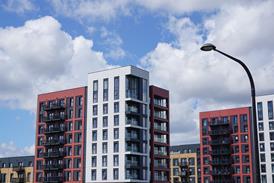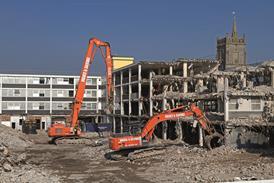Southwark council thought it was an open and shut case when angry leaseholders took action to avoid paying for double-glazing in place of rotten windows. It was a costly mistake.
“It’s the first time in all my career I’ve come across people trying to stop us putting new windows in – it’s usually the opposite,” says Allen Macpherson, an area manager at Southwark council. When the south London borough spent nearly £400,000 installing new double-glazing in two blocks on one of its estates, they had no reason to think that the residents would be anything but pleased. After all, the idea had been popular when it was proposed.
So it was an unwelcome surprise in January this year when the council was taken to a tribunal by a group of angry leaseholders who were adamant that the old single-glazed windows should never have been replaced. Five leaseholders on the Brandon estate successfully challenged the council’s decision to replace the windows at a leasehold valuation tribunal, bringing in their own surveyor to prove that the works were unnecessary. The council was criticised for the way in which it handled the renovations and was prevented from charging each resident £5200 to cover the cost of replacing the windows. It was limited instead to making each leaseholder pay a standard maintenance cost of £1644.
Southwark council was on the receiving end of a type of case that is set to become increasingly common as leaseholders take advantage of beefed-up legal powers under the Commonhold and Leasehold Reform Act 2002 – cases that could add hundreds of thousands of pounds to the cost of surveys for improvements to housing stock. Disputes between local authorities and leaseholders are far from new, but the possibility of landlords having the entire basis of their works programme called into question opens up a battle on a worrying new front.
“Cases like Southwark show how influential leasehold valuation tribunals are becoming,” says Nick Billingham, head of housing management at solicitor Devonshires. “Two years ago we dealt with about one such case a year. Now we have about six of these tribunals a year.”
Set up under the Housing Act 1996, leasehold valuation tribunals are less formal alternatives to county court hearings, where leaseholders could challenge bills for service charges. Their jurisdiction was extended by the Commonhold and Leasehold Reform Act 2002 to cover all leaseholder disputes. The tribunals involve a legal hearing before a panel consisting of a solicitor, a valuer and a lay person. For landlords, they’re often more expensive to fight than a county court case because they have to supply far more supporting documentation and cases can take longer to hear – but for leaseholders,
the tribunals make it easier to bring claims because they can cite a wider number of factors for a claim than a judge would allow, and the standards of proof are lower.
“Leaseholders are more aware of their rights to challenge now, and tribunals are very user-friendly,” says Billingham. He adds that, ironically, the £500 payable by claimants – intended to discourage frivolous cases – has simply had the effect of prompting groups of leaseholders to get together and pool their resources.
Leaseholders are more aware of their right to challenge now and valuation tribunals are very user-friendly
In Southwark, the tribunal was the culmination of a dispute that had been running since 2000, when the council first decided to undertake a £1.5m programme of improvements to the first two of six tower blocks on the Brandon estate, including new windows, repairs to the concrete structure and external decorations. Leaseholders – who make up seven of the 70 residents of each block – objected to proposals to install uPVC windows, some on environmental grounds, some on aesthetic and some on cost.
The leaseholder who made the initial application for tribunal, Sally Redway, is an architect and was motivated by the windows’ artistic merits: “I couldn’t believe my luck when I found the flat. It’s architecture of quality. The windows were integral to that – they comprised a whole external wall, forming the facade of the flat. All that has changed and I find the new windows aesthetically abhorrent.”
But Macpherson says that a ballot of residents voted 60 to 40 in favour of replacing the windows, and a subseqent ballot saw an overwhelming vote for uPVC. “These blocks were not decent, and one of the key elements was to do with the windows – they were single-glazed and some of them were rotten. The tribunal verdict came down to us not being able to prove that we had to replace them at this moment in time.”
Andrew Brookes, partner and head of housing department at solicitor Anthony Gold, who represented the leaseholders at tribunal, says that the tribunal found fault with the council’s survey of the Brandon estate on two counts. In 2001, contractors had assessed the state of the buildings, but the tribunal said that the windows were paid too little attention – they had been examined from the ground with binoculars. Secondly, while the survey concluded that the windows were in fair to good condition, the council decided to go ahead with replacing them anyway, based on a standard industry text that estimated the maximum life of timber windows at 35 years.
But Macpherson says that, in common with other works decisions, the council’s surveyors carried out a visual inspection of the outside of the building in 2001, and looked at a 10% sample. “The tribunal looked at the leaseholders’ windows in particular.
It was a very mixed bag: some were totally rotten, some were marginal and some okay.”
Other RSLs might easily end up in the same situation. The softwood windows are common to a lot of council housing
Other social landlords could easily find themselves in the same situation. The softwood windows that Southwark council replaced are a common feature of much medium- and high-rise council housing of the 1950s and 1960s, and prevalent both in and out of London. Richard Berry, managing director of professional and advisory services at contractor Pinnacle, says that aesthetics may increasingly spur leaseholders to take action. “Conservationists are more concerned with the architectural value of such windows than leaseholders, but cases like this will highlight how they can impact on house values and make leaseholders more empowered to challenge decisions.”
Fortunately for landlords, this isn’t enough on its own. “Architectural repute isn’t a common claim at tribunals,” says Billingham. “It wouldn’t stand up by itself, but leaseholders are allowed to raise any point they want and it all goes into the pot.”
As they get stuck into improvements programmes to bring stock up to the decent homes standard, councils and associations will find their decisions coming under scrutiny much more often in these tribunals. The crux of the Southwark case – and the lesson for other councils – was that the tribunal decided the council had failed to prove that the replacements were necessary.
So what could Southwark council have done to cover itself? Macpherson says that unlike court judgements, tribunals don’t set a precedent, so it’s hard to say: “Our lawyers said they’d gone to tribunals with exactly the same evidence and they’d gone the other way.” Southwark council is now trying to decide whether to charge leaseholders in the two of the six blocks where work is yet to be done the full cost of repairs or just the maintenance charge.
But the big decision for Southwark in future is whether to carry out more preparatory work before contracts are even put out to tender, on aspects such as how upfront investments will compare with operational costs, or a much wider survey. “The problem we have is that the more we do, the more it will cost us. This is a debate about leaseholder costs, but if we have to give the surveyors another £100,000, who’s going to pay for that?”
Source
Housing Today




















No comments yet